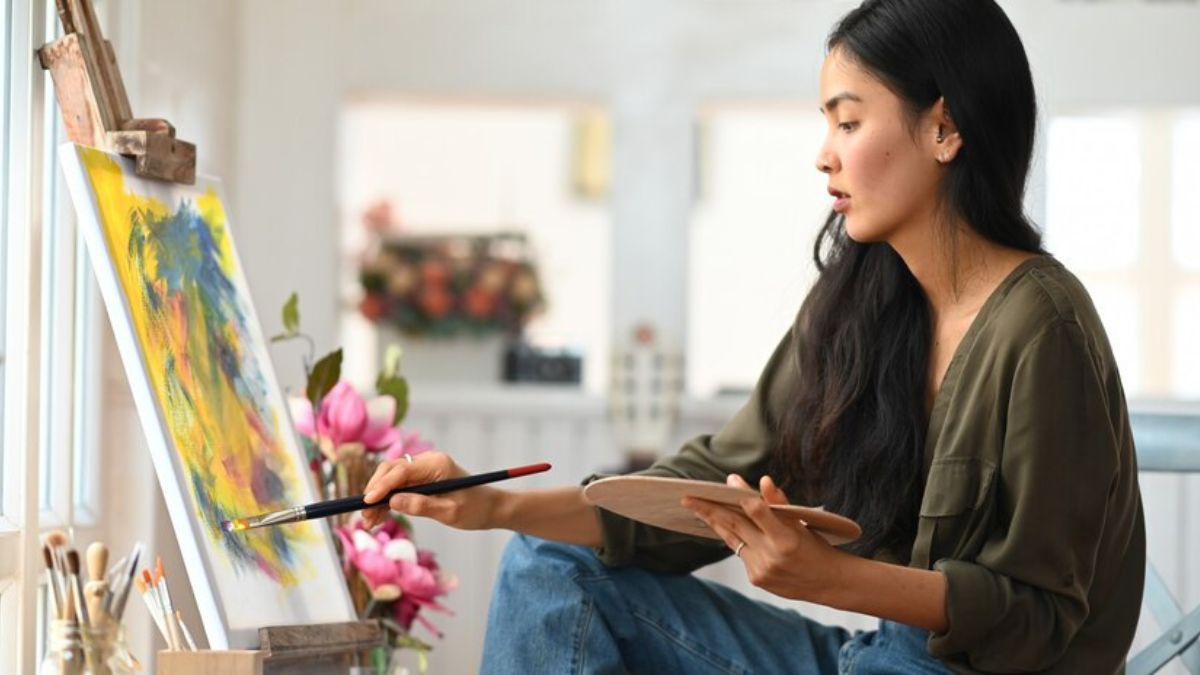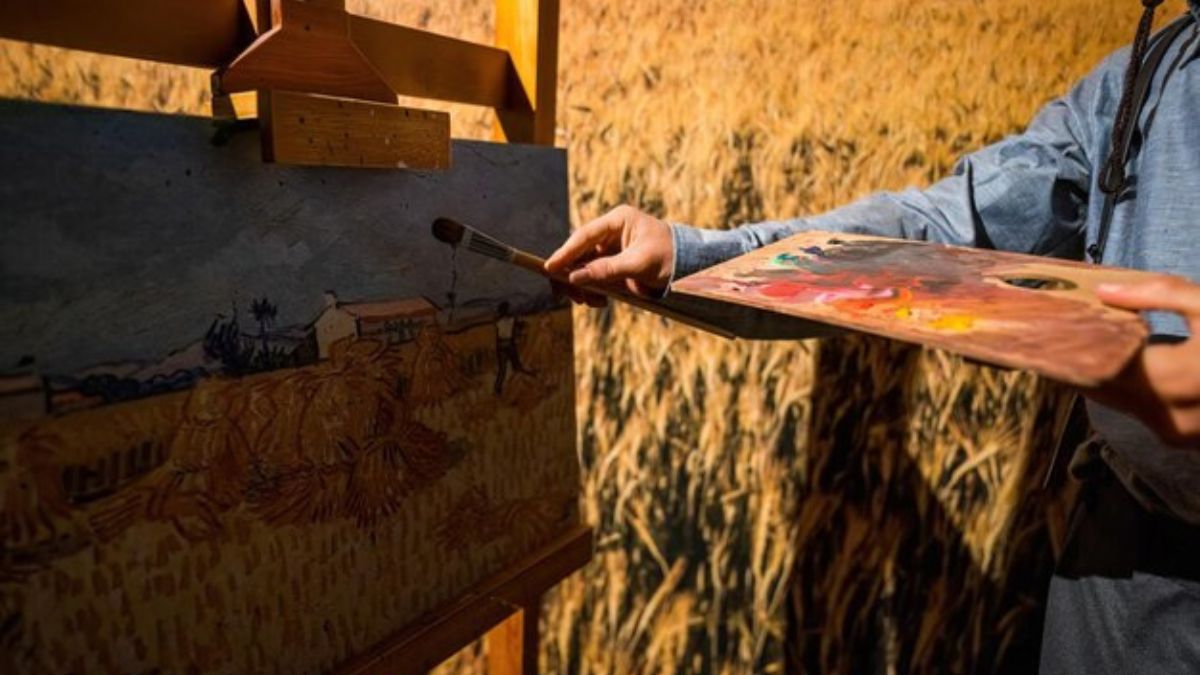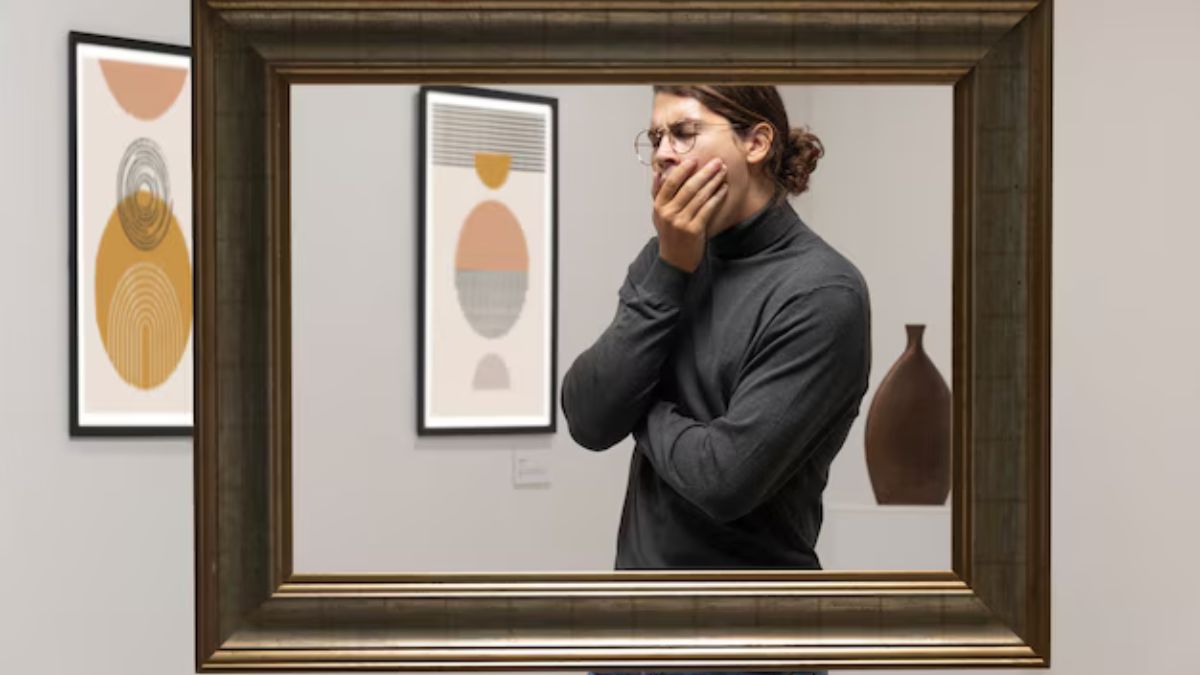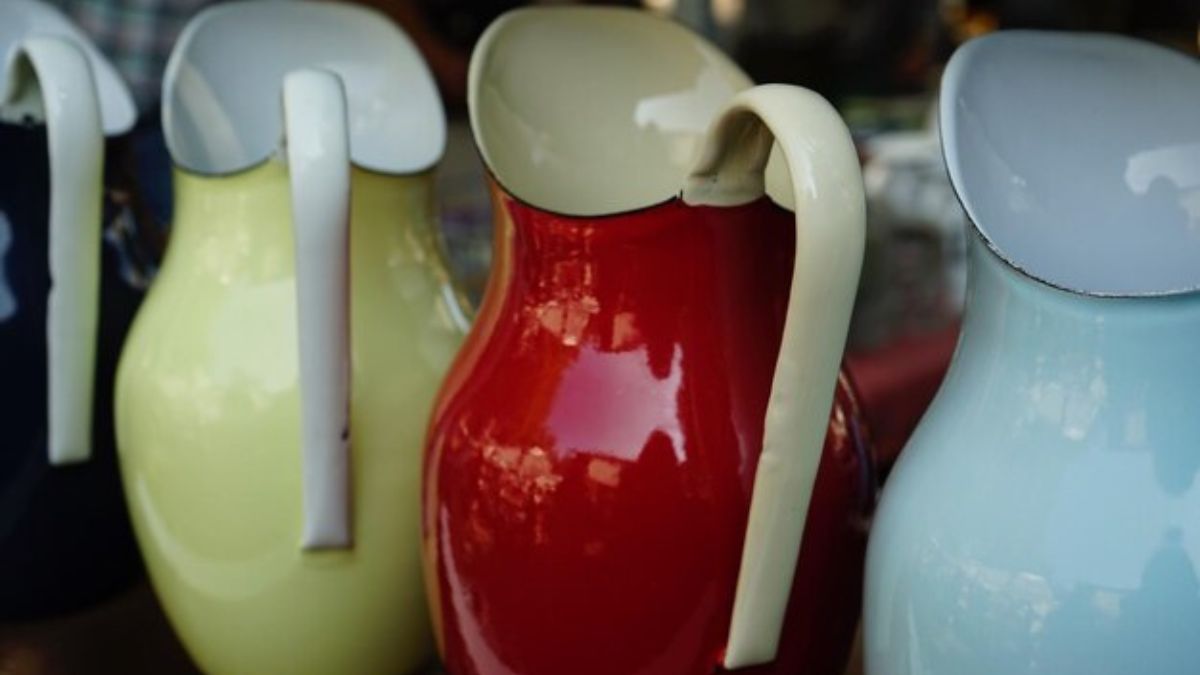ART
The Influence of Asianismo on Modern Filipino Artists: A Closer Look

Step into the vibrant world of modern Filipino art, where a movement known as Asianismo has been making waves. Discover how this cultural phenomenon rooted in Asian heritage has influenced and shaped the creativity of contemporary Filipino artists. Join us on a journey to explore the depths of Asianismo and its profound impact on the ever-evolving art scene in the Philippines.
The Rise of Asianismo in the Philippines
The rise of Asianismo in the Philippines signals a shift towards embracing cultural connections beyond borders. Filipino artists, inspired by the rich tapestry of Asian heritage, have begun weaving traditional elements into their contemporary works. This movement seeks to celebrate shared experiences and foster cross-cultural dialogue.
As local talents explore themes of unity and interconnectedness through their art, they transcend geographical boundaries and invite viewers to reflect on the universal human experience. The fusion of Filipino sensibilities with Asian aesthetics creates a unique artistic language that resonates with audiences both locally and internationally.
Through this burgeoning trend, Filipino artists are reclaiming their place in the global art scene while staying rooted in their own diverse cultural identity. By infusing their creations with elements from various Asian cultures, they are contributing to a more inclusive narrative that celebrates diversity and promotes understanding across different communities.
The Impact of Asianismo on Modern Filipino Art
Asianismo has undeniably left a significant mark on the landscape of modern Filipino art. This movement, rooted in the appreciation and incorporation of Asian cultural elements, has provided artists with a platform to explore their identity and heritage through their work. By infusing traditional Asian motifs, styles, and techniques into their creations, Filipino artists have been able to create pieces that resonate not only locally but also on an international level.
The impact of Asianismo can be seen in the unique fusion of traditional Filipino art forms with influences from across Asia. This blending of cultures has resulted in a diverse array of artworks that showcase the rich tapestry of Asian aesthetics and philosophies. Through Asianismo, Filipino artists have been able to break free from conventional artistic norms and push boundaries to create innovative and thought-provoking pieces.
Moreover, the influence of Asianismo has sparked conversations about cultural exchange and interconnectedness within the global art community. It has encouraged dialogue between different cultures while celebrating diversity and unity through creative expression. As modern Filipino artists continue to draw inspiration from various Asian traditions, they are contributing to a vibrant artistic discourse that transcends borders and unites people through shared experiences and stories depicted in their works.
Examples of Asianismo in Contemporary Filipino Art
In contemporary Filipino art, the influence of Asianismo can be seen in various forms and expressions. Artists today draw inspiration from diverse Asian cultures, blending traditional techniques with modern styles to create unique artworks that reflect their rich heritage.
One example of Asianismo in Filipino art is the use of vibrant colors and intricate patterns reminiscent of Japanese ukiyo-e prints. This fusion of Eastern aesthetics with Western influences results in visually captivating pieces that resonate with viewers on a deeper level.
Another prevalent theme in contemporary Filipino art influenced by Asianismo is the exploration of spirituality and nature found in Buddhist and Hindu traditions. Artists often incorporate symbols like lotus flowers or mandalas into their works, conveying a sense of peace and harmony rooted in ancient beliefs.
Furthermore, the reinterpretation of folklore and mythology from various Asian countries adds another layer to the complexity of modern Filipino art. By reimagining traditional stories through a local lens, artists create narratives that bridge cultural gaps while celebrating shared histories across Asia.
Criticisms and Controversies Surrounding Asianismo
Asianismo, despite its positive influence on modern Filipino art, has not been without criticisms and controversies. Some critics argue that focusing too much on Asianismo might overshadow the unique cultural identity of Filipino art. They worry that artists may neglect their local roots in pursuit of a more “Asian” aesthetic.
There is also debate surrounding the authenticity of Asianismo in Filipino art. Some question whether artists are genuinely inspired by Asian cultures or if they are simply following a trend to gain recognition in the global art scene. This raises concerns about artistic integrity and originality.
Additionally, some critics believe that embracing Asianismo may lead to cultural appropriation, where aspects of different cultures are adopted without proper understanding or respect for their origins. This can perpetuate stereotypes and distort the true essence of diverse Asian traditions.
Despite these criticisms, proponents of Asianismo argue that it serves as a bridge between different cultures, promoting cross-cultural exchange and understanding through artistic expression. The ongoing dialogue around these issues highlights the complexities and nuances involved in navigating cultural influences in contemporary Filipino art.
The Future of Asianismo in Filipino Art
As we look towards the future of Filipino art, it is evident that Asianismo will continue to play a significant role in shaping the artistic landscape. The fusion of traditional Filipino themes with broader Asian influences offers a unique perspective that resonates with both local and international audiences.
With advancements in technology and increased connectivity, Filipino artists have greater opportunities to collaborate and showcase their work on a global scale. This exposure not only enriches the diversity of artistic expressions but also fosters cross-cultural understanding.
As emerging talents embrace Asianismo as a means of self-expression, we can expect to see a continued evolution in styles and techniques. The exploration of cultural heritage combined with contemporary trends will undoubtedly lead to innovative artworks that challenge conventional boundaries.
In essence, the future of Asianismo in Filipino art holds promising prospects for creativity, collaboration, and cultural exchange. It is through this ongoing dialogue between tradition and modernity that the rich tapestry of Philippine artistry continues to unfold before our eyes.
Conclusion: Embracing Diversity and Cultural Exchange through Art
Embracing diversity and cultural exchange through art is essential for the growth and evolution of Filipino artistic expression. Asianismo has played a significant role in shaping modern Filipino art, highlighting the interconnectedness of cultures in the region.
As Filipino artists continue to draw inspiration from various Asian influences, they contribute to a rich tapestry of creativity that transcends borders. By embracing Asianismo and incorporating diverse perspectives into their work, these artists are not only honoring their heritage but also fostering dialogue and understanding among different communities.
Through the lens of Asianismo, Filipino art serves as a bridge that connects individuals from different backgrounds, inviting them to appreciate the beauty of cultural diversity. As we look towards the future of Filipino art, let us celebrate this spirit of inclusivity and openness, allowing it to guide us towards a more unified and harmonious artistic landscape.
In essence, embracing Asianismo is not just about celebrating one’s roots; it is about forging new connections and exploring uncharted territories in pursuit of creative enlightenment. Let us continue to champion diversity in all its forms and uplift voices that resonate with authenticity and passion. Together, we can build a brighter future where art knows no bounds—a future where cultural exchange thrives, inspired by the vibrant hues of Asianismo.

ART
From Field to Canvas: The Role of Nature in Ag-Kunst-Kultur

In a world where urban landscapes often overshadow the beauty of rural life, Ag-Kunst-Kultur emerges as a vibrant celebration of agriculture and artistry. This unique intersection not only highlights the significance of farming but also embraces nature’s profound influence on creative expression. Artists around the globe are drawing inspiration from fields, crops, and natural elements to create stunning works that resonate with our connection to the earth. As we explore this fascinating realm, we’ll uncover how ag-kunst-kultur embodies more than just art; it encapsulates a shared appreciation for nature’s bounty and its role in shaping culture. Join us on this journey from field to canvas as we delve into the intricate relationship between agriculture, art, and the environment!
The Influence of Nature in Ag-Kunst-Kultur artwork
Nature serves as a profound muse in Ag-Kunst-Kultur artwork. Artists draw inspiration from the textures, colors, and forms found in the natural world. Fields of golden wheat, rolling hills, and vibrant flora are frequently depicted.
These elements evoke emotions and memories tied to agricultural life. The interplay between light and shadow creates dynamic visuals that resonate with viewers.
The use of organic materials further blurs the line between art and nature. Many artists incorporate soil, seeds, or plant fibers into their work. This technique deepens the connection to the land.
Moreover, landscapes often symbolize broader themes like sustainability or climate change awareness. By representing nature authentically, these artworks invite reflection on humanity’s relationship with agriculture.
This influence shapes not only visual aesthetics but also societal perspectives on farming practices and environmental stewardship.
The Representation of Agriculture in Ag-Kunst-Kultur
Agriculture serves as a profound source of inspiration in Ag-Kunst-Kultur. Artists draw from the rhythms of planting and harvesting, transforming these cycles into visual narratives.
Fields teem with life, bursting with colors and textures that beg to be captured on canvas. Every brushstroke reflects the intimate bond between humans and the land they cultivate.
This representation goes beyond mere aesthetics; it embodies stories of labor, tradition, and resilience. The hardships faced by farmers become poignant themes in art, evoking empathy and understanding.
Through each piece, viewers are invited to experience the beauty of rural landscapes while acknowledging their cultural significance. Nature’s bounty is not just depicted; it becomes a character within the artwork itself.
As agriculture evolves, so too does its portrayal in art. Contemporary interpretations challenge perceptions and encourage dialogue about sustainability and food security through vivid imagery rooted in nature’s essence.
Cultural Significance of Ag-Kunst-Kultur and its Connection to Nature
Ag-Kunst-Kultur embodies a rich tapestry woven from the threads of agriculture and artistry. This unique cultural expression highlights how deeply intertwined human creativity is with nature’s bounty.
In many societies, agricultural practices are not merely about sustenance; they are rituals filled with history and tradition. Artworks often reflect these traditions, showcasing the beauty of landscapes, crops, and farming life.
Nature serves as both muse and medium in this genre. Local flora, fauna, and seasonal changes inspire artists to capture the essence of their environment vividly.
By embracing local elements in their work, artists foster a sense of identity within communities. They remind us that our survival is linked to nature’s rhythms while celebrating the aesthetics born from cultivation.
This synergy creates an ongoing dialogue between humans and their surroundings—a testament to resilience nurtured by a shared reverence for land.
Impact on Environmental Awareness and Conservation Efforts
Ag-Kunst-Kultur serves as a powerful platform for fostering environmental awareness. Artists often draw inspiration from nature, highlighting its beauty and fragility. This focus encourages viewers to appreciate their surroundings more deeply.
Through vivid imagery of landscapes and agricultural scenes, these artworks provoke thought about sustainability. They remind us of our connection to the land and the importance of preserving it for future generations.
Moreover, many artists incorporate eco-friendly materials in their creations. This choice not only minimizes waste but also reinforces a message about conservation practices. By prioritizing renewable resources, they spark conversations around responsible consumption.
Exhibitions centered on Ag-Kunst-Kultur can inspire community action too. Visitors may feel compelled to engage in local environmental initiatives or support sustainable farming practices after experiencing impactful art that resonates with them emotionally.
Contemporary Artists Incorporating Nature in Ag-Kunst-Kultur
Contemporary artists are redefining ag-kunst-kultur by weaving nature into their work. They explore the intricate relationships between agriculture and art, often using natural materials to create stunning pieces.
These creators draw inspiration from sustainable practices. Many use organic pigments or recycled agricultural products in their art, emphasizing harmony with the environment. Their works reflect a deep respect for the land and its resources.
Some artists even collaborate with farmers to produce site-specific installations that respond to local ecosystems. This approach fosters a dialogue about agricultural practices and environmental stewardship.
Exhibitions featuring these artworks invite viewers to engage with nature’s beauty while contemplating humanity’s impact on it. Each piece serves as both an aesthetic experience and a call to action for conservation efforts within communities.
Through their innovative methods, contemporary artists are breathing new life into ag-kunst-kultur, proving that creativity can thrive alongside sustainability in our ever-changing world.
Conclusion: The Enduring Relationship Between Agriculture, Art, and Nature
The interplay between agriculture, art, and nature is a dynamic tapestry that continues to evolve. Ag-Kunst-Kultur captures this essence by merging the beauty of the natural world with agricultural practices. Artists draw inspiration from fields, crops, and landscapes, using their canvas to communicate deeper meanings about our relationship with the environment.
This connection fosters a greater appreciation for both art and farming. It reminds us of our roots—literally and metaphorically—and emphasizes the importance of sustainability in today’s world. As contemporary artists explore these themes further, they encourage conversations around conservation and environmental responsibility.
Through ag-kunst-kultur, we witness not just an artistic expression but also a profound reflection on how intertwined our existence is with nature. The vibrant colors of harvests blend seamlessly into creative works that inspire change and promote awareness about ecological issues.
Art becomes a vehicle for cultivating respect for rural life while celebrating its significance within broader cultural narratives. This enduring relationship invites all of us to recognize the beauty surrounding agriculture—not only as sustenance but as something worthy of preservation through artistry.
ART
The Impact of Louis Ohle on Contemporary Art Scene

Louis Ohle is a name that has been making waves in the contemporary art scene. With a unique blend of creativity and innovation, he stands out as an influential figure whose work challenges perceptions and pushes boundaries. Born into a world rich with artistic heritage, Ohle’s journey into the realm of art began at a young age. His passion for self-expression and exploration soon transformed him from an aspiring artist to one of today’s most talked-about creators. As we delve deeper into his background and contributions, it becomes clear why Louis Ohle continues to captivate audiences around the globe.
Early influences and artistic style
Louis Ohle’s artistic journey began in a small, vibrant town where creativity thrived. Early on, he was influenced by the eclectic mix of street art and classical sculptures around him. This environment played a pivotal role in shaping his unique perspective.
Embracing bold colors and abstract forms, Ohle developed an expressive style that defies traditional boundaries. His works often blend realism with surreal elements, creating captivating visual narratives.
He draws inspiration from personal experiences and social issues, reflecting the world’s complexities through his art. The use of mixed media allows him to experiment freely while engaging viewers on multiple levels.
Ohle’s fascination with nature also shines through in many pieces. Organic shapes intertwine seamlessly with urban elements, showcasing a dialogue between the natural world and human-made structures. Each stroke tells its own story, inviting audiences to explore deeper meanings within their layers.
Impact on the contemporary art scene
Louis Ohle’s impact on the contemporary art scene is both profound and multifaceted. His innovative approach has redefined how artists engage with their mediums, encouraging a blend of traditional techniques and modern technology.
Ohle’s work often challenges societal norms. He invites viewers to question established narratives through thought-provoking pieces that resonate emotionally and intellectually.
His exhibitions have become pivotal moments in the artistic calendar. They attract diverse audiences, fostering discussions that bridge generational gaps in art appreciation.
Emerging artists frequently cite him as an inspiration. Many attempt to emulate his fearless exploration of themes like identity and culture, pushing boundaries further than before.
Through collaborations with various creators across disciplines, he helps cultivate a vibrant art community. This collaborative spirit amplifies voices that might otherwise go unheard in the mainstream dialogue.
Notable works and exhibitions
Louis Ohle’s body of work is as diverse as it is impactful. His early pieces, characterized by bold colors and abstract forms, quickly captured the attention of both critics and collectors. Works like “Urban Pulse” explore the heartbeat of city life through dynamic brush strokes.
His exhibitions often push traditional boundaries. The 2021 showcase at the Modern Art Museum was a turning point, featuring immersive installations that invited viewers into his artistic dialogue.
Ohle’s piece “Echoes of Memory” gained significant acclaim for its poignant exploration of nostalgia in contemporary society. This installation combined multimedia elements to create an engaging experience.
Another standout exhibition took place in Berlin, where Ohle collaborated with local artists to reflect on cultural identity. These works not only highlighted individual voices but also fostered community connections through art. Each exhibit leaves audiences pondering deeper questions about humanity and existence within a modern context.
Collaborations with other artists
Louis Ohle has always embraced collaboration as a vital part of his artistic journey. Working alongside various artists, he fosters an environment that encourages experimentation and innovation.
One notable partnership was with sculptor Mia Tran. Together, they combined painting and sculpture to create immersive installations that challenged traditional boundaries. Their joint projects often sparked conversations about the intersection of different mediums.
Ohle also collaborated with performance artist Jaden Brooks. This unique synergy resulted in live art pieces that captivated audiences. The fusion of visual art and performance added a dynamic layer to both their works.
Furthermore, he frequently engages in community-driven initiatives, teaming up with local artists for murals and public exhibits. These collaborations not only enrich his portfolio but also strengthen ties within the artistic community, making art accessible to all.
Criticisms and controversies surrounding Ohle’s work
Louis Ohle’s work has not been without its detractors. Some critics argue that his artistic approach lacks depth, dismissing it as superficial or overly commercial. They claim that his pieces often prioritize marketability over meaningful commentary.
Controversies have also arisen from specific installations and exhibitions. Certain works have sparked debates around cultural appropriation, with accusations of insensitivity toward marginalized communities. This has led to heated discussions in the art world about the responsibilities of contemporary artists.
Despite these criticisms, Ohle remains a polarizing figure. His ability to evoke strong reactions—both positive and negative—demonstrates the power of his art to engage audiences on multiple levels. It’s this very tension that keeps him relevant in today’s ever-evolving landscape of contemporary art.
Legacy and influence on future generations of artists
Louis Ohle’s influence stretches far beyond his own creations. Emerging artists often cite him as a pivotal figure in their development. His ability to blend traditional techniques with modern themes inspires new explorations of identity and culture.
His workshops and mentorship programs have planted seeds of creativity in countless young talents. They learn not just about technique, but also the importance of personal voice in art.
Ohle’s emphasis on pushing boundaries encourages future generations to experiment fearlessly. Many find themselves drawn to social issues, echoing his commitment to activism through art.
Art schools today incorporate elements of Ohle’s philosophy into their curricula, ensuring that his vision continues to resonate within academic settings. This fusion of education and inspiration cultivates an environment ripe for innovation, making sure Louis Ohle’s impact remains vibrant for years to come.
Conclusion: Why Louis Ohle is a significant figure in the art world
Louis Ohle stands as a significant figure in the art world due to his unique ability to challenge perceptions and provoke thought through his work. His background enriches the narrative of contemporary art, providing depth and context that resonates with audiences both familiar and new.
Ohle’s early influences sculpted not only his artistic style but also set him apart from many of his contemporaries. This distinctiveness has enabled him to leave a profound mark on the contemporary art scene, inspiring countless artists who seek to explore similar themes.
His contributions are visible in notable works displayed across renowned exhibitions worldwide. Each piece reveals layers of meaning, inviting viewers into an immersive experience that goes beyond mere aesthetics. Collaborations with diverse artists further amplify this impact, merging different creative expressions while fostering community within the artistic realm.
Despite facing criticisms and controversies—common territory for innovative creators—Ohle remains undeterred. He continuously pushes boundaries while cultivating dialogues around complex issues, making room for reflection and discourse among critics and fans alike.
As we look toward future generations, it’s clear that Louis Ohle’s influence will endure. His legacy is one of fearless exploration paired with a commitment to authenticity in expression. In today’s evolving landscape of contemporary art, he serves as a vital touchstone—a reminder that true artistry lies in the courage to confront challenges head-on while celebrating creativity’s limitless potential.
ART
Carafe 101: Types, Materials, and Care Tips

Carafes are more than just simple vessels for serving beverages; they are a statement piece that can elevate your dining experience. Whether you’re hosting an intimate dinner party or enjoying a quiet evening at home, having the right carafe can enhance both the aesthetics and functionality of your table setting. With various styles and materials available, it’s easy to find one that fits your personal taste.
In this guide, we’ll explore the different types of carafes—ranging from elegant glass designs to sturdy stainless steel options and artistic ceramics. You’ll learn about their unique advantages and potential drawbacks, helping you make an informed choice tailored to your needs. Plus, we’ll share essential care tips to keep your carafe in top shape for years to come.
Let’s dive into the world of carafes and discover how these chic containers can be both practical and stylish additions to any household!
Different Types of Carafes – Glass, Stainless Steel, and Ceramic
Carafes come in various materials, each bringing its own charm and functionality to the table.
Glass carafes are a popular choice for their elegance. They showcase the drink inside beautifully, allowing you to appreciate colors and textures. However, they can be fragile and require careful handling.
Stainless steel carafes offer durability that glass simply can’t match. They’re great for outdoor gatherings or busy kitchens where accidents might happen. Plus, they often have insulating properties to keep your beverages at the desired temperature longer.
Ceramic carafes combine aesthetics with sturdiness. Available in countless designs and glazes, they add a touch of personality to any setting. While heavier than glass or stainless steel options, they do not conduct heat as much as metal does, making them ideal for serving both hot and cold drinks without burning your hands.
Choosing between these types depends on personal style and practical needs.
Advantages and Disadvantages of Each Type
Glass carafes are elegant and showcase the beverage inside beautifully. They’re great for serving wine or water at dinner parties. However, they can be fragile and prone to breakage if dropped.
Stainless steel carafes offer durability and insulation benefits. They keep drinks hot or cold for extended periods, making them perfect for outdoor events. On the downside, they lack transparency, which may detract from presentation.
Ceramic carafes provide a unique aesthetic with various designs and colors. They retain heat well but can be heavy compared to glass or stainless options. Also, some ceramic finishes might not withstand high temperatures.
Each type brings its own charm along with specific limitations. Consider how you plan to use your carafe when weighing these factors carefully.
Choosing the Right Material for Your Needs
When selecting a carafe, consider how you plan to use it. Glass carafes offer elegance and transparency. They showcase beautifully colored beverages or infused water. However, they can be fragile and require careful handling.
Stainless steel is robust and practical. It keeps drinks insulated for hours, making it ideal for hot coffee or chilled wine during gatherings. Plus, it’s easy to clean and resistant to staining.
Ceramic carafes provide a charming aesthetic with unique designs. They are often hand-painted or glazed, adding character to your table setting. However, like glass options, they may chip if not handled properly.
Think about your lifestyle too. If you’re frequently entertaining guests outdoors or traveling, durability might take precedence over aesthetics in your choice of material!
Care Tips for Longevity and Optimal Performance
To keep your carafe looking pristine, start with gentle cleaning. Use warm soapy water and a soft sponge. Avoid abrasive materials that could scratch the surface.
For glass carafes, consider using baking soda for tough stains. Just sprinkle some inside, add water to create a paste, and scrub lightly.
Stainless steel models can be wiped down with vinegar or lemon juice to eliminate odors. A quick rinse after each use prevents buildup of residues.
Ceramic carafes are more delicate. Hand wash them carefully to avoid chips or cracks.
Store your carafe in a safe place where it won’t get knocked over. Using coasters underneath is also smart if you’re placing it on wooden surfaces.
Try not to expose any type of carafe to extreme temperature changes, as this can compromise its integrity over time. Proper care ensures your stylish piece remains functional for years.
Creative Ways to Use and Display Carafes in Your Home
Carafes are versatile pieces that can elevate any space. Fill a glass carafe with fresh flowers for an eye-catching centerpiece. This adds charm and a natural touch to your dining table.
For the kitchen, consider using ceramic carafes as stylish storage containers. Store olive oil or vinegar in them; they not only keep your counters organized but also become decorative elements.
Stainless steel carafes work beautifully outdoors. They maintain temperature for beverages during summer gatherings while adding a modern flair to your patio setup.
Try using smaller carafes to serve individual portions of sauces or dressings at dinner parties. This creates an interactive dining experience that guests will appreciate.
Don’t forget about aesthetic display! Create a dedicated shelf showcasing various styles and materials of carafes, mixing shapes and colors for visual interest throughout your living room or kitchen.
Conclusion: Carafe as a Functional and Stylish Addition to Any Household
A carafe is more than just a vessel for serving beverages; it’s an elegant statement piece that can enhance your dining experience. With various materials such as glass, stainless steel, and ceramic available, there’s a style to fit every home decor and personal preference. Each type offers its own set of benefits and potential drawbacks, making it essential to choose wisely based on your needs.
Taking care of your carafe ensures it lasts longer and maintains optimal performance. Simple cleaning habits will keep it looking fresh while avoiding any unpleasant tastes in your drinks.
Beyond their practical use, carafes can be creatively displayed throughout your home. Use them as centerpieces or decorative items—whether filled with colorful fruits or standing alone, they add flair to any setting.
Incorporating a well-chosen carafe into your household elevates both functionality and aesthetics. It merges practicality with design seamlessly—a true must-have for anyone who appreciates good taste in both beverages and interior styling.
-

 TECHNOLOGY10 months ago
TECHNOLOGY10 months agoExploring the Benefits of Using Tanzohub for Your Blog
-

 ENTERTAINMENT10 months ago
ENTERTAINMENT10 months agoThe Legendary Career of the Half of a 1990s-2000s Rock Duo with Six Grammys
-

 HEALTH9 months ago
HEALTH9 months agoThe Ultimate Guide to Using Greenheal.net for Holistic Wellness
-

 HEALTH10 months ago
HEALTH10 months agoThe Secret Ingredient for Radiant Skin: All About Oridzin
-

 HEALTH11 months ago
HEALTH11 months agoQxefv: The Ultimate Solution for Stress Relief and Wellness
-

 NEWS9 months ago
NEWS9 months ago5 Fascinating Facts About Mgj Doppy Tlae That Will Blow Your Mind
-

 ENTERTAINMENT7 months ago
ENTERTAINMENT7 months agonhentai 455058: The Ultimate Guide to Understanding this Fan-Favorite Manga
-

 NEWS11 months ago
NEWS11 months agoUnlocking the Potential of SSIS 816 in Data Integration